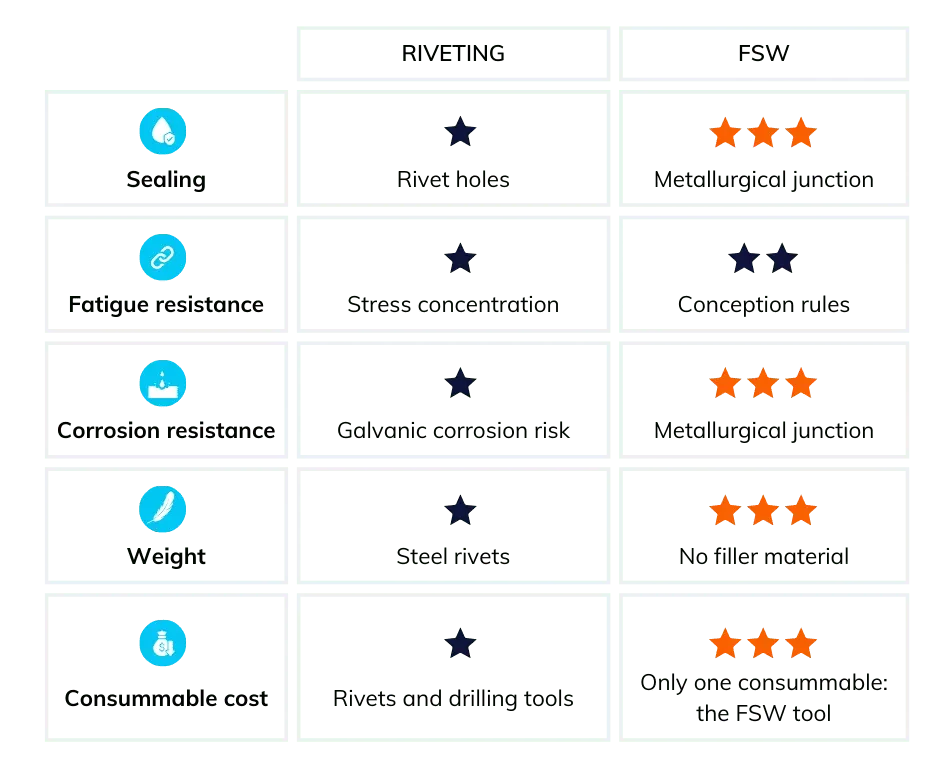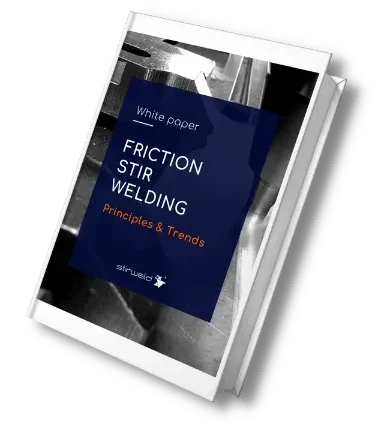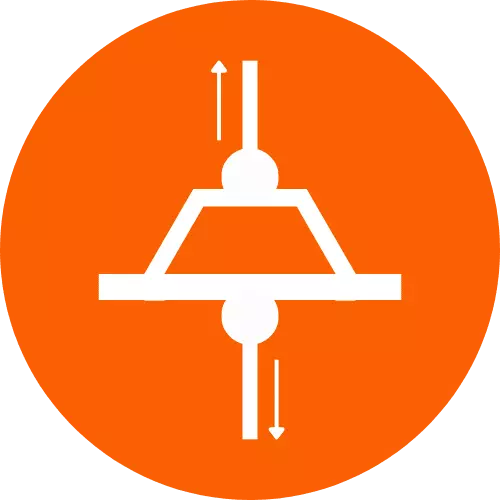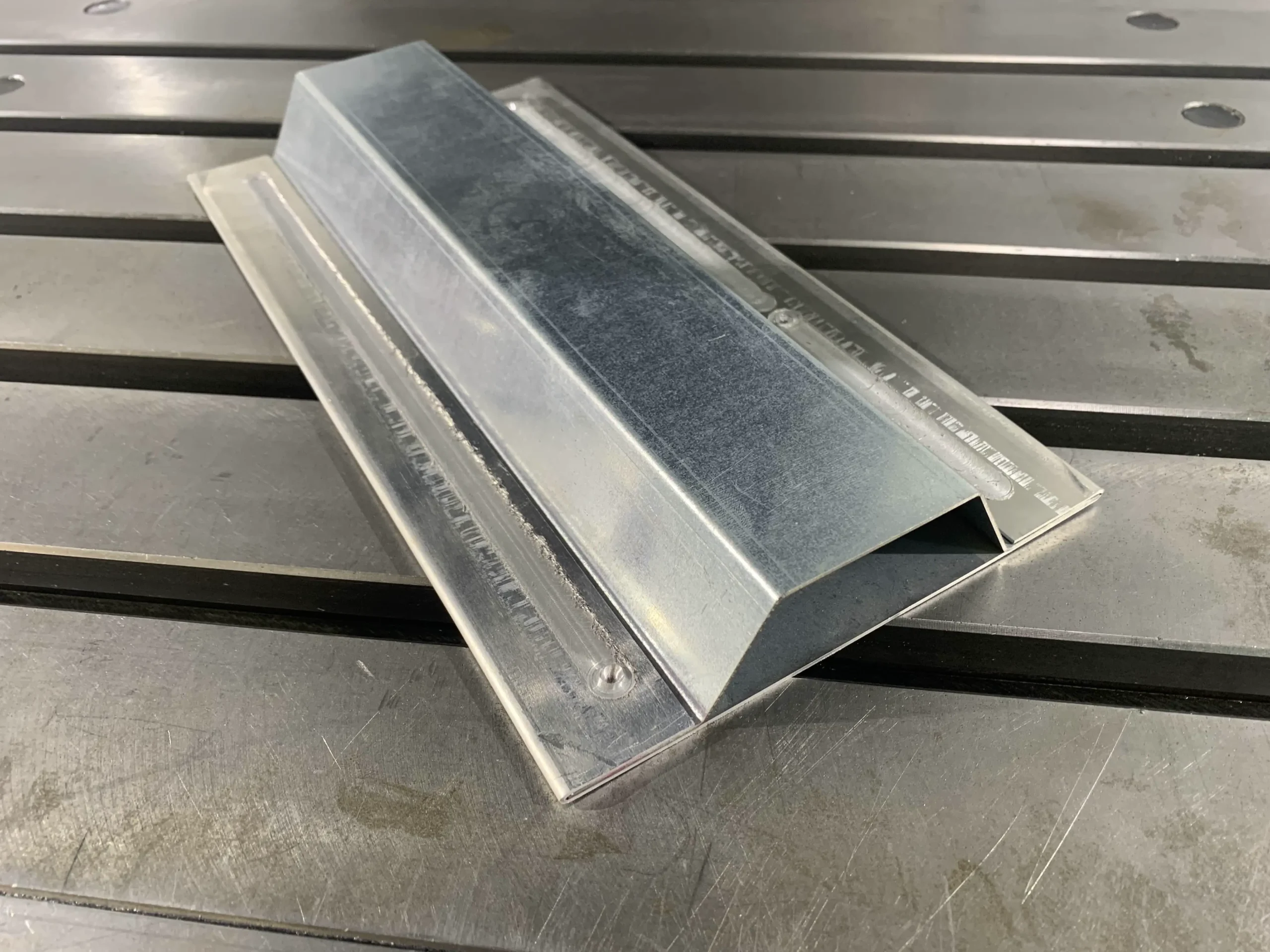FSW APPLICATION
Stiffened Panels Welded by FSW
Enhanced technical characteristics of aluminium stiffened panels through Friction Stir Welding.
Why Choose Friction Stir Welding for Your Stiffened Panels Assembly?
Aluminium stiffened panels comprising a “skin” sheet and stiffeners, are widely utilized in industries like aeronautics, automotive, railways, naval and bridge construction. Formerly assembled primarily through riveting or MIG welding, these panels are increasingly being joined using FSW welding due to its superior technical benefits in the assembled components.

No Risk of Leak
Ranging from vacuum to any liquid, as FSW is a solid-state welding process, thus eliminating porosity.

Wider Panels
With FSW, aluminium profiles, which must be less than 400 mm wide, can be butt welded to overcome this limitation.

High Mechanical Resistance
FSW creates joints with tensile and fatigue strength close to the base material, ensuring long-lasting structural integrity.

Cost Divided by 10
Compared to MIG or laser welding, FSW offers a more economical solution (no gas, no wire, few electrical energy).
Technical Specifications of FSW-Welded Stiffened Panels
See Friction Stir Welding Applied to Stiffened Panels in Real-Time
Comparing FSW to Traditional Stiffened Panels Assembly Techniques
Friction Stir Welding vs. Riveting

Aluminium Stiffened Panels: Key Concerns for Critical Sectors
In the realm of advanced manufacturing, the emergence of Friction Stir Welding as a reliable technique has transformed how industries approach assembly and design. FSW-welded stiffened panels stand out, not just for their robustness but also for their adaptability and efficiency in construction. These panels are renowned for their mechanical stability, lightweight attributes and resistance to environmental challenges, qualities that are sought after in high-demand sectors. Industries ranging from automotive to aerospace, from shipbuilding to railway, have witnessed the transformative benefits of these welded panels
Stiffened panels play a pivotal role in various sectors where high mechanical resistance is imperative:




They Trust Us
“At Calip, we use Friction Stir Welding technology for three main reasons. First, for sealing purposes. Our clients often come to us with sealing challenges for their components and we find that FSW provides the only reliable solution. Second, we value the mechanical strength that FSW offers. As we work with very large profiles that sometimes require reassembly, the mechanical strength of the weld is crucial. The third advantage is repeatability, which ensures consistent quality across multiple welds.”

Gabriel Venet
Doctor of mechanical engineering

Dive Deeper: Comprehensive FSW Stiffened Panels Resources
Are you curious to learn more about stiffened panels welded by FSW? We provide everything you need, including webinars, blog articles and whitepapers.
Webinar – 45 min – Replay on demand
Stiffened panels welded by FSW
Explore innovative friction stir welding technique for joining stiffened panels. The special qualities of 6xxx alloys and the intricacies of the high strength 2xxx and 7xxx aluminum alloys are clarified in this session. Take advantage of the knowledge that top industry players have to offer.
Blog articles – 5 min
Stiffened panels welded by FSW
4 essential elements for high quality FSW
White paper – 20 min
Aluminium stiffened panels welded by FSW
Explore in-depth the precise manufacturing of stiffened aluminum panels using FSW in this white paper. Overcome assembly challenges by using a process that prioritize robustness and endurance.

White paper – 20 min
Friction Stir Welding: principles & trends
Explore the nuances of FSW with our white paper. Learn about its operational benefits, distinctive product strengths, economic benefits, range of equipment and current market trends.

Ready to Revolutionize your Stiffened Panels Assembly?
With our state-of-the-art FSW technology, experience greater cost-effectiveness and performance. To discuss specific solutions for your stiffened panel manufacturing needs, please contact our specialists.
















